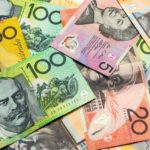 The euro declined for a second straight week against the US dollar for the first time in almost five months on speculation European Central Bank and Federal Reserve monetary policies are diverging.
The euro declined for a second straight week against the US dollar for the first time in almost five months on speculation European Central Bank and Federal Reserve monetary policies are diverging.
EUR/USD touched a session low at 1.3705 at 10:00 GMT, the weakest since February 28, after which the pair settled at 1.3752 on Friday, losing 0.3% for the week, after falling 0.9% in the previous week. The pair last registered two consecutive weeks of drops in the 10 trading days ended November 8. Support was likely to be found at February 28th low, 1.3694, while resistance was to be met at March 27th high, 1.3728.
“The sense that the ECB needs to react is very strong; their delivery tends to be somewhat disappointing,” Sebastien Galy, a senior currency strategist at Societe Generale SA in New York, said in a Bloomberg phone interview. “We’re starting to see the beginning of divergences in policies, which we haven’t seen for many years, and that is very good for the foreign-exchange market.”
Earlier in the trading Friday, the euro weakened to a one-month low against the US dollar as inflation slowed in three German states and prices unexpectedly declined in Spain, reinforcing speculation the ECB may signal additional monetary stimulus next week, to bolster the economic recovery.
On Thursday, ECB Governing Council member Luis Maria Linde reiterated the words of few of her colleagues, saying central bank’s policy makers haven’t ruled out introducing further stimulus to spur economic growth in the euro area as they take the risk of deflation very seriously.
The governor of the Bundesbank and member of the ECB Governing Council, Jens Weidmann commented on March 25, the ECB may use negative interest rates to counter further appreciation of the 18-nation common currency and added that policy makers have not ruled out introducing new stimulus to fight against deflation. Stimulus programs tend to weaken a currency.
ECB policy makers, who lowered the main interest rate to a record-low 0.25% in November, are set to reconvene on April 3rd.
The euro has lost 1.3 percent in the past three months, the worst performer after the Canadian dollar, of 10 developed-nation currencies tracked by Bloomberg Correlation-Weighted Indexes, while the dollar has dropped 1.2 percent.
Meanwhile, the Federal Reserve policy makers trimmed their bond-buying program by another $10 billion to $55 billion per monthlast week and Fed Chair Janet Yellen said that the first increase in borrowing costs should come “around six months” after the end of the stimulus program. The monetary easing program is expected to be brought to an end this fall.
On Friday, greenback’s demand was pressured after Thomson Reuters in cooperation with the University of Michigan reported the final reading of their index, a gauge of US consumer confidence, which came in at 80.0, below analysts’ expectations of an increase to 80.5, but slightly up from a preliminary reading of 79.9.
However, data also showed that consumer spending in the US rose in February by the most in three months as incomes increased, adding to evidence the economy is gaining momentum after the unusually harsh winter.
Consumer spending, which accounts for almost 70% of the American economy, rose 0.3% last month, in line with analysts’ estimates and after a 0.2% increase in the previous month that was smaller than previously reported. Incomes also advanced 0.3% in February, in line with analysts’ expectations and matching January’s gain, data by the US Commerce Department showed today.
The US citizens were trying to shrug off the effects of the inclement weather as they rushed out to shop, supported by a labor market that was also gaining traction.
Friday’s data also revealed that core price, excluding the volatile food and fuel items, inched up 0.1% last month and were up 1.1% from the previous year, the same as in January and in line with analysts’ estimates.
During the week ahead investors’ attention will be focused on the US report on non-farm payrolls in March, as well as on the upcoming ECB policy meeting.
EUR/USD may be influenced also by a number of reports/events, that are scheduled during the upcoming week as follows:
On Monday (March 31st), the European Union will release its flash harmonized index of consumer prices for March, whose reading is expected to have slown down to 0.6% from 0.7%.
At 13:45 GMT the United States will report on business activity in the region of Chicago during March.
On Tuesday (April 1st), Germany, France, Spain, Italy and the euro zone as a whole will report on their final manufacturing PMI indexes.
At 14:00 GMT the Institute for Supply Management (ISM) will report on its manufacturing PMI for the United States during March.
On Wednesday (April 2nd), at 12:15 GMT Automatic Data Processing Inc. (ADP) will release data regarding the change in private sector employment in the United States during March.
At 14:00 GMT the United States is expected to report on factory orders in February, a vital indicator for overall production activity in the country.
On Thursday (April 3rd), Germany, France, Spain, Italy and the euro zone as a whole will release data on their services PMI indexes for March. At 12:45 GMT, the ECB will announce its interest rate decision, which later will be accompanied by a statement of the ECB President Mario Draghi.
The United States is to release its weekly report on initial jobless claims during the week ended on March 23rd, accompanied by a report on nation’s trade balance in February.
At 14:00 GMT the Institute for Supply Management (ISM) is to announce the reading of its non-manufacturing composite index for the United States in March.
On Friday (April 4th) the United States will release the keenly anticipated report on the change in non-farm payrolls as well as the rate of unemployment during March.





